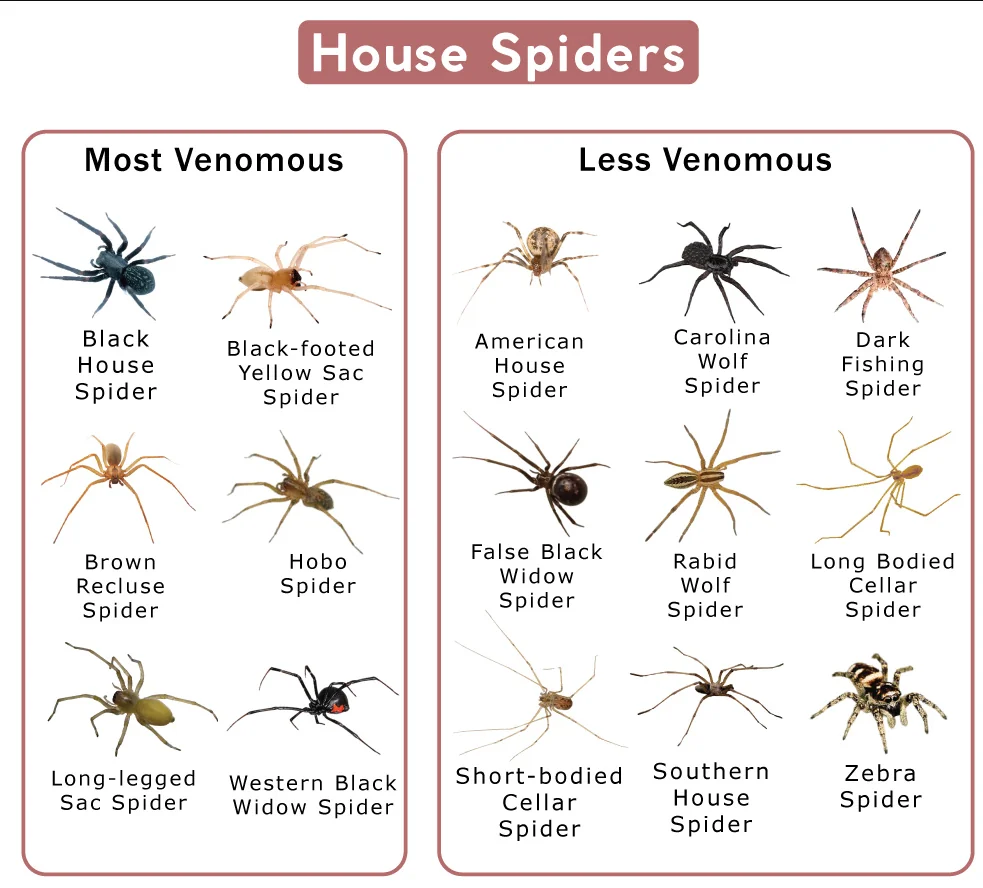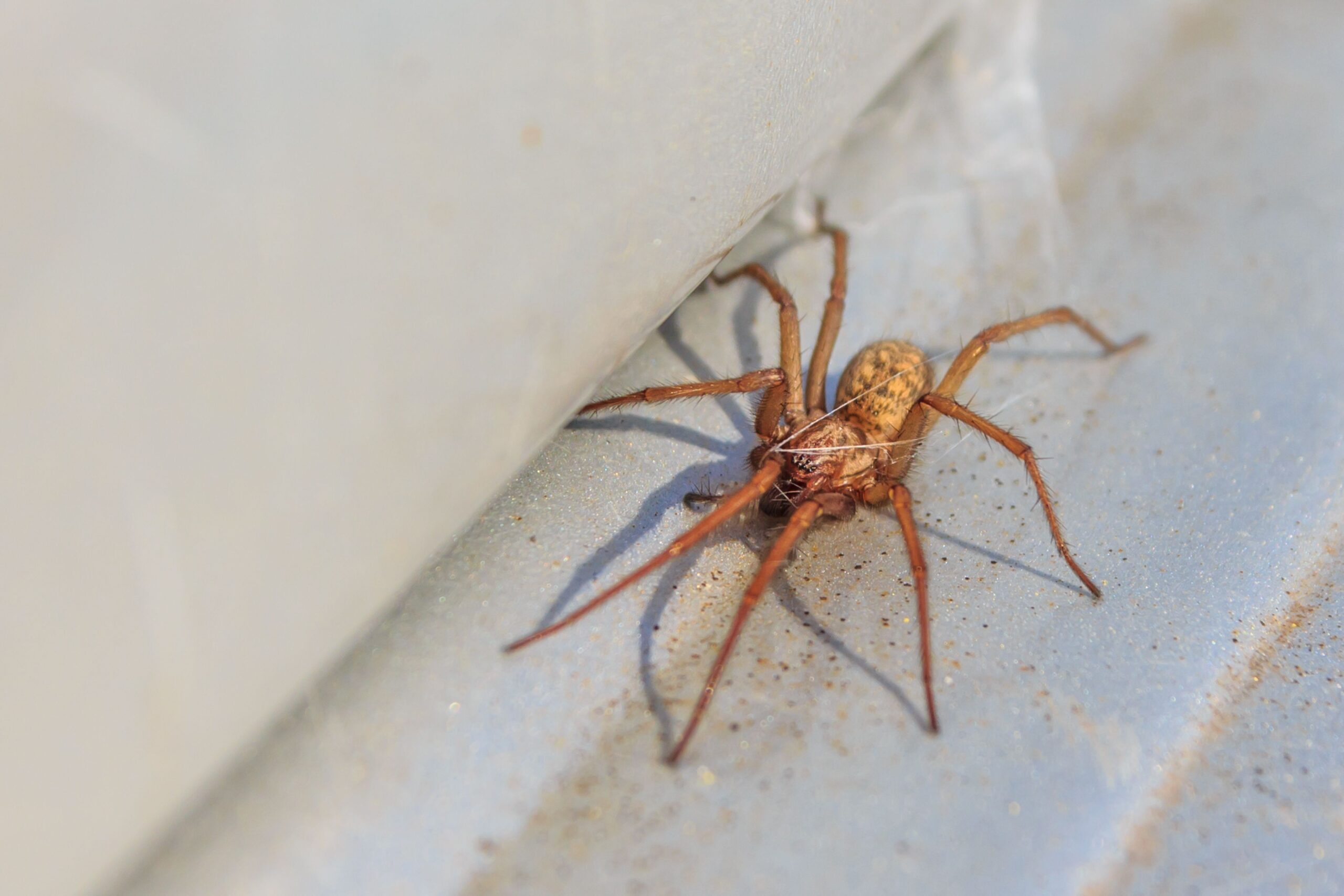Spider Treatments in Florida
Exterminator Services for Clermont, Groveland, Mascotte, Oakland, and Montverde
Florida’s subtropical climate, celebrated for its year-round warmth, ample humidity, and mild winters, creates comfortable conditions not only for residents but also for pests—including spiders. While most spiders help control other insects, large populations or the presence of venomous species can disturb occupants, disrupt normal routines, and occasionally pose health risks. In Clermont, as well as nearby areas like Groveland, Mascotte, Oakland, and Montverde, a spider infestation can escalate quickly if web-building species find enough insects to feed on or if venomous spiders locate quiet, hidden corners. This service page clarifies why spiders prosper in Florida, the signals that they have taken up residence, and why employing a professional spider exterminator remains the most direct approach to comprehensive spider treatments. By responding swiftly when encountering repeated webs or suspicious spider sightings, property owners mitigate occupant anxieties and avoid potential venomous bites altogether.
Why Spiders Flourish in Florida

Why Spiders Flourish in Florida
- Warm Temperatures Year-Round
In states with harsh winters, spiders face months of dormancy or reduced breeding. Florida’s milder winter seldom becomes cold enough for prolonged inactivity. Spiders remain relatively active, continuing to hunt and reproduce if they locate consistent prey indoors or around property exteriors. - High Humidity and Abundant Insect Prey
Many spiders gravitate toward moist habitats, given that their prey—like mosquitoes, gnats, or roaches—tend to cluster in humid or damp spaces. Florida’s humidity and frequent rain sustain robust insect populations, ensuring reliable food sources for spiders. Whether building webs in corners or prowling at ground level, spiders remain well-fed as long as other insects abound. - Minimal Seasonal Dormancy
In cooler areas, spiders might slow or stop reproduction during frigid months, decreasing spider counts until warmer weather returns. In southwestern Florida, mild winters impose no strict dormancy, granting spiders near-constant breeding. A small spider presence can grow into a noticeable infestation in just a few months if occupant vigilance falters. - Frequent Property Transitions
Communities like Clermont, Groveland, or Mascotte might see occupant changes—new rentals, seasonal visitors, or short-term guests. Spiders can move in through luggage, secondhand furniture, or shipping materials, especially if occupant checks for pests remain lax. Once inside, stable indoor warmth allows them to remain active year-round. - Yard Habitats
Spiders like orb-weavers flourish in gardens, shrubs, or corners of structures with consistent insect prey. Taller grass, leaf piles, or untrimmed hedges create shady, moist microhabitats. If occupant yard upkeep lags, spider populations near walls or under eaves may rise, seeking indoor entry if convenient cracks exist.
Telltale Indicators of Spider Infestation
- Frequent Webs in Living Spaces
Spiders typically spin webs in corners, ceilings, or near light sources that draw insects. If you keep removing webs indoors, yet they reappear within days—and multiple corners show such webs—this accumulation signals a growing spider population. - Egg Sacs
Spiders deposit egg sacs in webs, corners, or under furniture. Each sac can contain dozens or hundreds of spiderlings. Repeatedly finding these small, silken pouches around a property points to active breeding, requiring occupant or professional removal to halt expansions. - Venomous Spider Sightings
Spotting black widows (with a red hourglass) or brown widows (a pale or orange hourglass) in a garage, near children’s play areas, or around bedroom corners can be concerning. Although spider bites are typically rare if spiders remain undisturbed, venomous species near occupant traffic warrants immediate attention. - Multiple Spiders in Unused Rooms
Spiders often seek quiet, undisturbed corners—such as basements, attics, or storage closets. If rummaging through these areas reveals numerous webs or adult spiders scurrying away, an infestation might be underway, especially if occupant activity has not previously disturbed them. - Persistent Insect Prey
If your property experiences an ongoing insect influx—like flies around bright porch lights—spiders likely gather to feed on them. Minimizing insect presence can indirectly lower spider numbers. Large roach or ant populations similarly beckon hunting spiders.
Risks Linked to Spiders
- Potential Venomous Bites
Although most Florida spiders pose minimal threat, black or brown widow species do harbor potent venom. Bites can cause pain and potentially serious reactions in vulnerable individuals. Swift occupant response ensures these spiders do not nest in places with high human contact. - Unsettling Environment
Even harmless orb-weavers can unnerve occupants or visitors if webs spread across doorways, windows, or corners. Tidying these webs repeatedly can turn daily tasks into a headache. Large spider sightings might deter guests or hamper occupant comfort. - Indoor Web Accumulations
House spiders weaving multiple webs across ceilings, closets, or under furniture can appear unsightly or be interpreted as poor sanitation. Eliminating them fosters a more welcoming atmosphere, particularly in commercial or hospitality settings. - Ignored Egg Sacs
Leaving egg sacs unremoved fosters new generations. Over time, a few egg sacs easily yield numerous spiderlings that can spread out, spinning webs in new areas or corners of the property.
Why a Professional Spider Exterminator Proves Key
- Accurate Species Identification
A spider exterminator identifies whether you have benign household spiders, orb-weavers, widow species, or other variants. Recognizing their behaviors guides the approach, such as focusing on venomous spider hideouts or webs near lighting. - Targeted, Low-Risk Applications
Over-the-counter sprays might saturate large areas, risking occupant overexposure while missing hidden spider pockets. Professionals deploy insecticides or insect growth regulators precisely where spiders lurk—like eaves, crevices, or behind appliances—maximizing lethal contact and limiting occupant chemical exposure. - Insect Prey Control
Spiders concentrate where insects abound. Exterminators often integrate or recommend roach or ant control if these pests proliferate indoors. Reducing insect populations starves spiders, forcing them out or diminishing their numbers. - Physical Removal of Webs and Egg Sacs
Vacuuming or brushing away webs, along with attached egg sacs, significantly cuts spider counts. Professionals know repeated visits or occupant-based routines hamper re-webbing, a crucial step to halting expansions. - Follow-Up and Guidance
Because spider egg sacs might hatch weeks after initial removal, scheduling re-checks or occupant-based monitoring helps confirm no leftover spiderlings survive. If occupant sightings persist, additional spot treatments finalize thorough elimination.
- Accurate Species Identification

Potential Extermination Methods
- Indoor Inspection and De-Webbing
An exterminator examines rooms, ceilings, corners, or behind furniture for webs, egg sacs, or adult spiders. Removing webs physically disrupts existing spider traps. Occupants watch for new webs in the same spots to see if spider presence continues. - Perimeter Sprays or Barrier Treatments
Many spiders enter from outside to feed on insects drawn to porch lights or yard moisture. By applying residual insecticides along foundations, window sills, or door frames, professionals establish a protective barrier that stops spiders crossing these zones. Occupants often wait until sprays dry before re-entering. - Insect Growth Regulators and Targeted Sprays
Deploying growth regulators that hamper egg or nymph stages ensures new spiderlings cannot mature. Meanwhile, directed insecticidal sprays in corners or eaves kill adult spiders and hamper re-webbing in problem areas. - Eliminating Prey Insects
Because controlling roaches, mosquitoes, or other bugs can deprive spiders of their primary food source, exterminators often propose integrated pest management. By reducing insect presence indoors or in yards, occupant synergy keeps spiders from converging on those prime feeding spots. - Follow-Up Monitoring
After removing webs and applying treatments, occupant or professional checks confirm minimal or no new webbing. Sticky traps behind furniture or in corners can catch wandering spiders, alerting occupants if spider presence lingers.
Serving Clermont, Groveland, Mascotte, Oakland, and Montverde
Clermont: Known for scenic hills and growing neighborhoods. Spiders easily infiltrate older homes with unsealed eaves or new constructions that disturb outdoor habitats. Regular occupant-based yard or interior checks hamper heavy spider infiltration, especially during insect-laden months.
Groveland: A suburban-rural blend. If occupant yard management—like removing leaf piles or trimming bushes—lags, orb-weavers or wolf spiders might cluster near windows or patios. Swift occupant diligence plus professional perimeter spraying stifles these eight-legged expansions.
Mascotte: Experiencing fresh development, these transitional areas see spiders roam in from farmland or older properties. Occupant or caretaker-based housekeeping ensures hidden corners remain free of webs or discovered egg sacs.
Oakland: Near major routes and scenic locales, older homes or partial occupant presence might let spiders spin webs unchallenged in basements or attics. Quick occupant action upon seeing venomous widows in garages or repeated webbing near entryways fosters occupant peace of mind.
Montverde: Known for lakeside views and partial-year residents. If vacant homes remain unvisited, spiders can expand into quiet attics, corners, or yard edges. Seasonal occupant checks plus scheduled professional attention curb large webs or sudden spiderling booms upon occupant return.

Why Our Spider Treatments Excel
- Florida-Focused Knowledge
Because southwestern Florida seldom sees the freezing winters that hamper spider breeding, we adapt an ongoing approach—combining occupant insect control with targeted web removal and insecticide usage—to keep spiders at bay year-round. - Precision for Occupant Safety
We apply insecticides or insect growth regulators sparingly, focusing them in high-web corners, under eaves, or behind appliances. Occupants remain safe from broad chemical exposure, and spiders encounter lethal conditions where they dwell. - Prevention Emphasis
Removing adult spiders or webs solves the immediate issue, but occupant help—like adjusting outdoor lighting (to reduce insect swarms), trimming shrubs, or sealing cracks—prevents new or returning spiders from recolonizing. This synergy cements long-term solutions. - Follow-Up Assurance
Because egg sacs might hatch weeks after initial removal, occupant or professional checks confirm no residual spiderlings survive. If occupant sightings remain, extra spot treatments or adjusting perimeter sprays finalize success, ensuring occupant comfort.
Next Steps
Are you discovering multiple webs indoors, concerned about black widows near your garage, or spotting spiders frequently in corners at night? Contact us to learn more or schedule your service. Our spider treatments in Clermont, Groveland, Mascotte, Oakland, and Montverde counter each stage of spider infestations—removing webs, eliminating adult spiders, and thwarting newly hatched spiderlings. Calling a skilled spider exterminator spares you from indefinite web clearing, occupant anxieties, and potential venomous bites.
By attacking spiders comprehensively—via perimeter sprays, controlled insect populations, occupant housekeeping, and repeated web removal—these eight-legged interlopers stand little chance of regaining a foothold in your property. Act swiftly to avert ballooning spider communities in attic corners or behind seldom-used furniture, restoring occupant comfort and a sense of calm.
Maintaining a Spider-Free Setting
Once you eliminate spiders, adopting basic occupant habits keeps them from returning:
- Regular Web Removal: Vacuum or wipe away any small webs soon after noticing them. Removing webs denies spiders from reusing established trap zones, especially near doorways or windows.
- Minimize Insects: Since spiders follow insect prey, controlling roaches, flies, or mosquitoes through occupant housekeeping or professional pest management lowers spider attraction.
- Light Positioning: Switching bright white exterior bulbs to yellow “bug lights,” or directing lights away from doorways, reduces insect swarms and, consequently, spiders waiting in the wings.
- Seal Entry Points: Check for cracks along windows, doors, or foundations. Use caulk or weatherstripping to plug potential spider routes. A sealed home deprives new spiders of easy indoor access.
- Remove Yard Debris: Raking leaves, trimming shrubbery, and discarding wood piles near walls limit moist, shaded spider harborage. By preventing large insect gatherings outside, you reduce spider enclaves.
Coupling occupant diligence with professional spider solutions ensures southwestern Florida properties remain safe from venomous threats and daily inconveniences of thick webs or scuttling arachnids. Even in a region fostering year-round spider activity, consistent vigilance plus strategic insect control keeps them from re-establishing, letting families or tenants relish Florida’s climate without weaving through webs each day.
